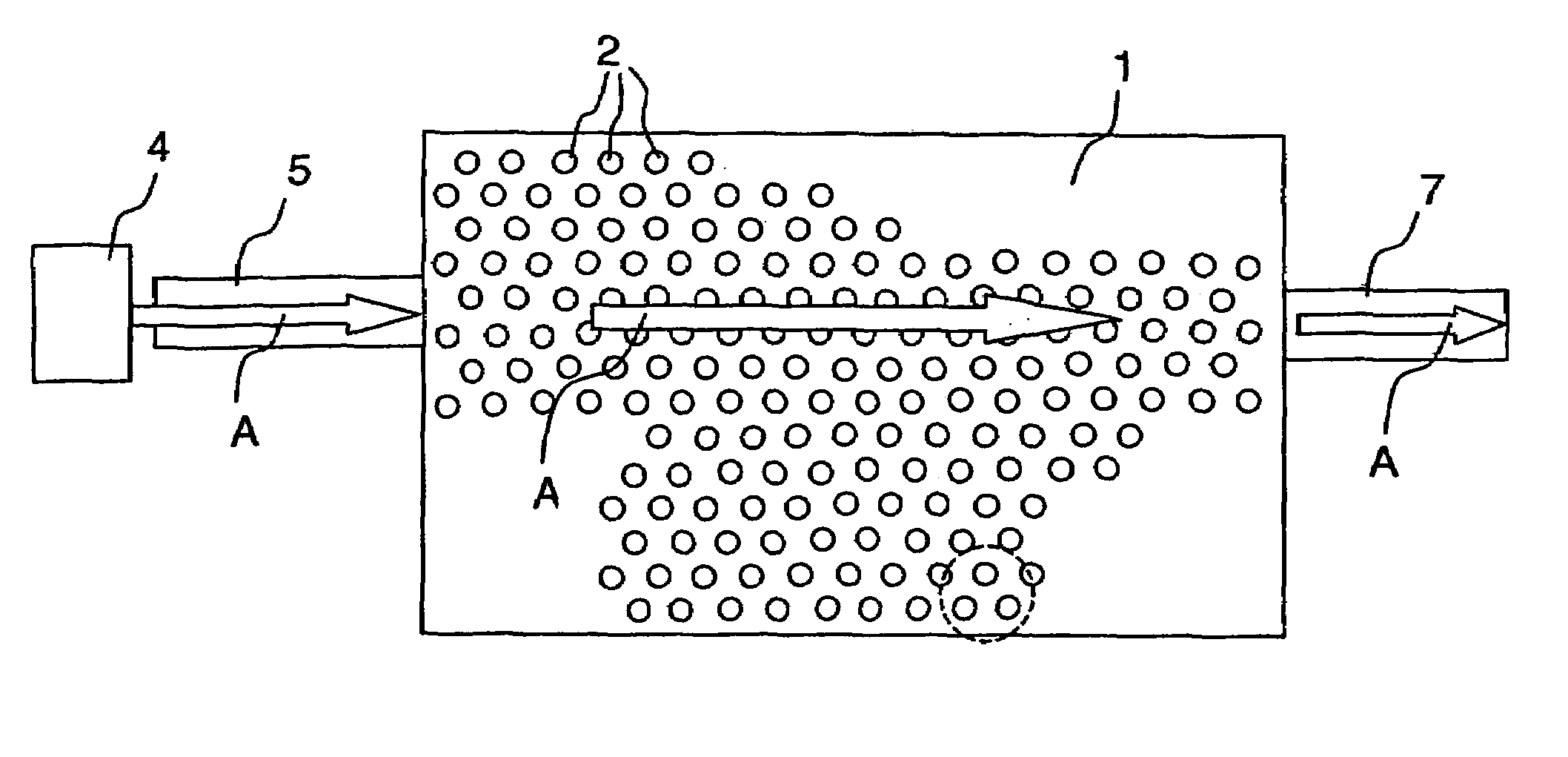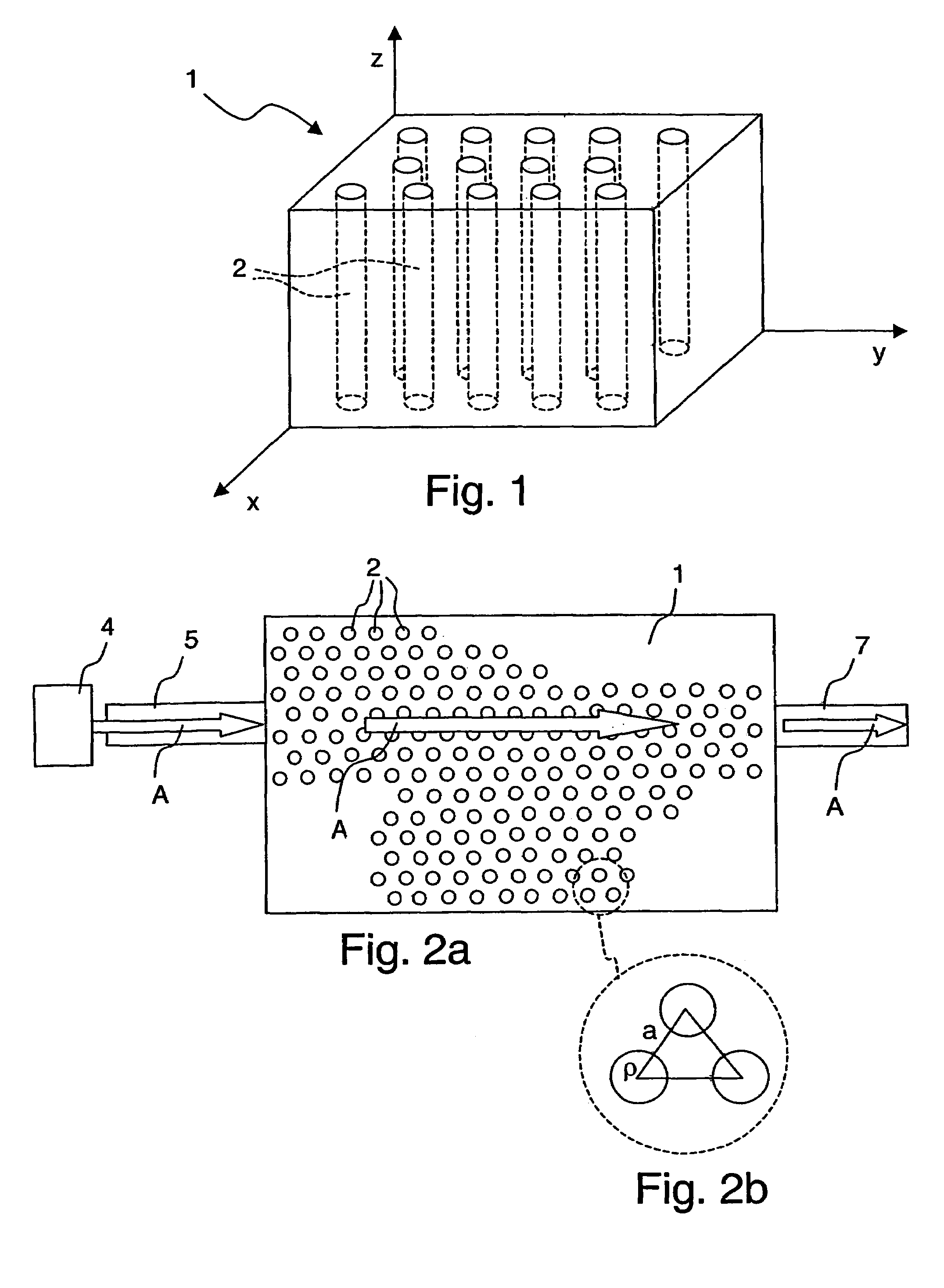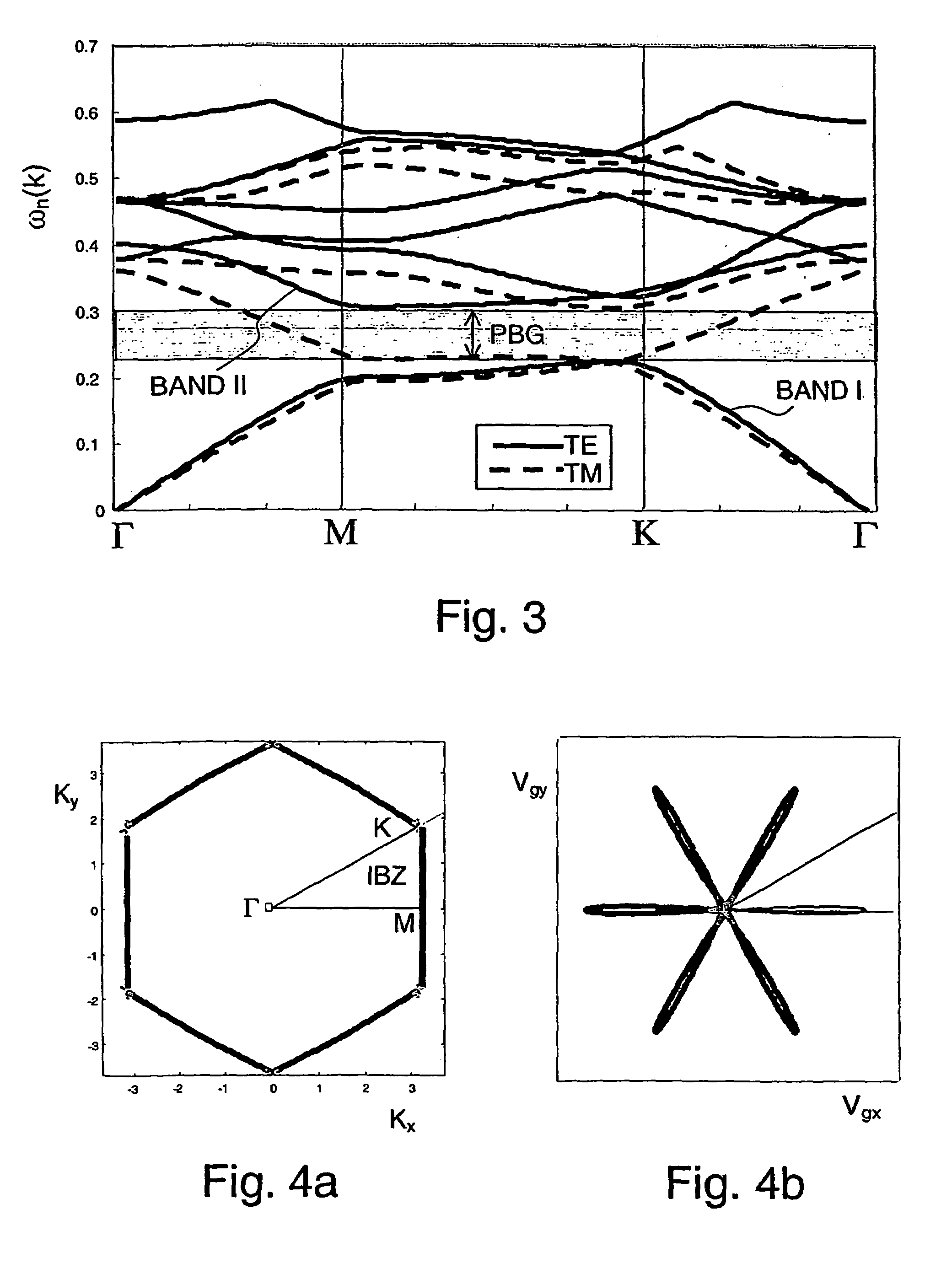Method for guiding an electromagnetic radiation, in particular in an integrated optical device
a technology of electromagnetic radiation and optical device, applied in the direction of optical waveguide light guide, instrumentation, nanotechnology, etc., can solve the problem that the application of photon focusing in integrated optics is limited
- Summary
- Abstract
- Description
- Claims
- Application Information
AI Technical Summary
Benefits of technology
Problems solved by technology
Method used
Image
Examples
example 1
[0123]In a first set of simulations, it is shown how the characteristics parameters R, n and ωn can be selected for achieving photon guiding. The simulation model previously described has been used for determining the group velocity distributions for different combination of values of said parameters. A photonic crystal having a (equilateral) triangular array of air holes and an initial isotropic distribution of the group velocities has been considered. The analysis is limited to the first dispersion band of the mode TE and it is performed by expressing the group velocity in polar coordinates.
[0124]A isotropic distribution of group velocities about a predetermined crystal axis in an angular range of π / 3 for a triangular array, and of π / 2 for a square array, has been considered.
[0125]The parameter R has been varied between 0.15 and 0.45 by steps of 0.3; as concern the parameter n, the values 1.5, 2, 2.5, 3.25 and 3.5 have been considered; the parameter ωn has been varied of steps of ...
example 2
[0143]The same simulation has been performed for a photonic crystal having a square array of holes. Differently from above, the percentage of points originally in a range of π / 2 about the considered propagation direction that have been concentrated within an angular range of π / 6 is now considered. The parameters R and n have been varied between 0.15 and 0.45 and between 2 and 3.5, respectively. Table VI reports the results of this simulation. In particular, Table VI shows, for each possible combination of values of the parameters R, n, the value of ωn that allows maximizing the guiding effect.
[0144]
TABLE VI
[0145]As above, areas corresponding to a possible condition and a more preferred condition for photon guiding have been delimited by a heavy line and a thin line, respectively.
example 3
[0146]X-crossing without cross-talk in a photonic crystal according to the present invention has been demonstrated by a numeric simulation.
[0147]The simulation has been performed by considering a triangular array of holes filled with air, with a period a of 0.372 μm. The bulk refractive index n is 3.5, the normalized spacing R is 0.42 and the normalized frequency ωn is 0.24. Two beams of light A, B at wavelengths 1550 nm, having a width of about 5 μm are propagated at 60° from each other along two crystal axes. Only the mode TM is considered. Propagation is simulated in a plane x–y, with input of light at y=0 μm. FIG. 11 shows the propagation of the two beams A, B within the photonic crystal. It can be appreciated that the beams cross each other and no alteration occurs after having left the interaction region (i.e., without cross-talk).
PUM
 Login to View More
Login to View More Abstract
Description
Claims
Application Information
 Login to View More
Login to View More - R&D
- Intellectual Property
- Life Sciences
- Materials
- Tech Scout
- Unparalleled Data Quality
- Higher Quality Content
- 60% Fewer Hallucinations
Browse by: Latest US Patents, China's latest patents, Technical Efficacy Thesaurus, Application Domain, Technology Topic, Popular Technical Reports.
© 2025 PatSnap. All rights reserved.Legal|Privacy policy|Modern Slavery Act Transparency Statement|Sitemap|About US| Contact US: help@patsnap.com



